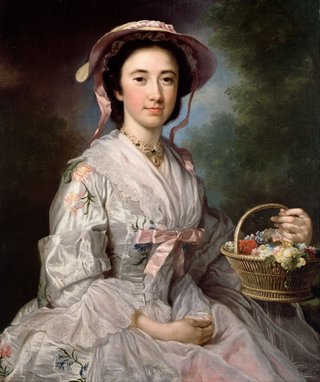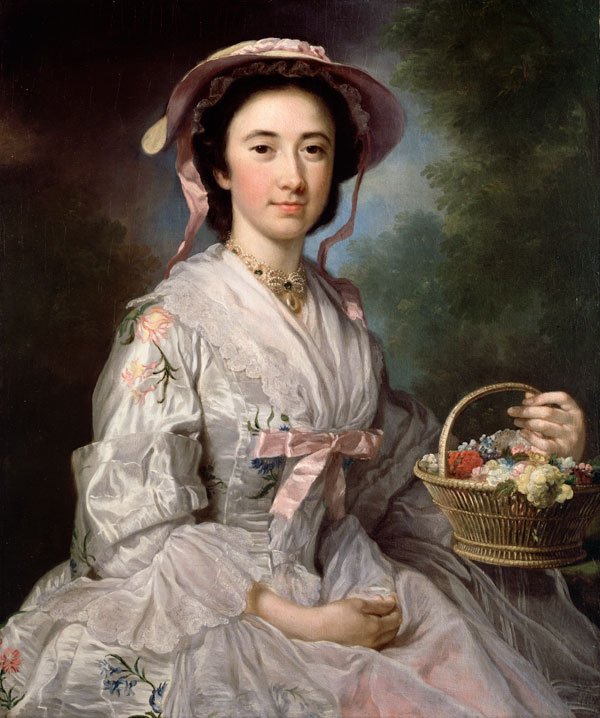-
Acquisition
Fairfax Murray Gift, 1917
-
Accession number
DPG606
-
Artist description
George Knapton
-
Date
c.1745-50
-
Dimensions
76.5 x 64.1 cm
-
Materials
Oil on canvas
-
Notes
Adopted by Lady Leggatt, 1995
The identity of this sitter is known through an inscription made by the British antiquarian Horace Walpole (1717-97) on a mezzotint after this painting (British Museum, London). Walpole noted that this is ‘Lucy Ebberton – afterwards the wife of Captain Greeg of the Marines…’ and it is possible that the portrait was commissioned to mark Ebberton’s engagement to Captain Thomas Gregg. The painting is full of symbolism that celebrates betrothal. Her brocaded silk dress is decorated with trails of flowers, including carnations, roses, honeysuckle, bluebells and cornflowers, all symbols of love, happiness, devotion and joy. They are gathered in their natural forms in the wicker basket held in her hand. To finish her ensemble, a necklace of paste pearls in the shape of a bow knot, another symbol of love and union, adorns her neck, the knot mirrored in the pink bow on her dress. She wears a morning gown that was the height of mid-eighteenth-century fashion, finished with lacy ‘engageants’ (‘false sleeves’) at the cuffs, the open skirt revealing the peachy tones of her petticoat just visible beneath a sheer apron.
Competing for the viewer’s attention is the Spitalfields silk gown that adds another layer to the story. In the early eighteenth century, French rococo fashion was brought to the British market by Huguenot silk weavers who had fled persecution in France, setting up business in Spitalfields, east London. Drawn to this flourishing industry was Anna Maria Garthwaite (1690–1763). Originally from Lincolnshire, she moved to Spitalfields in her early forties to pursue a career as a self-taught silk designer. Unmarried and independent, she soon established herself as a respected artist in what was predominantly a male-dominated industry. Her realistic floral designs simplified the French rococo style to create a British interpretation that came to define Spitalfields silks in the 1740s and 1750s. Garthwaite was at the forefront of developing naturalistic patterns, which she produced as watercolours for master weavers to interpret in fabric. Through personal connections, Garthwaite was able to make studies at the Chelsea Physic Garden in London of newly discovered, exotic plant species from the Americas and Africa. She would often combine different plants in her designs, making hybrids based on accurate botanical details, using snaking ‘S’ curves across pale grounds, with shaded petals and leaves, very similar to the floral motifs seen on Ebberton’s morning gown. It is possible that Ebberton is dressed in Garthwaite silk, championing a pioneering and successful businesswoman ahead of her time.

Want to use or download this artwork?
For personal use - Download artwork
For commercial use - Purchase a licence & download on Bridgeman images
